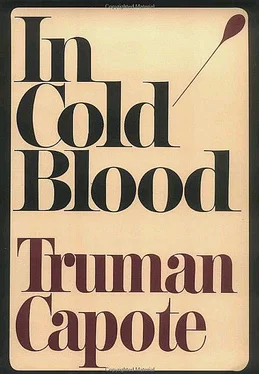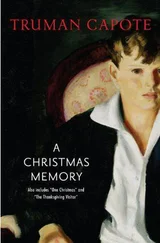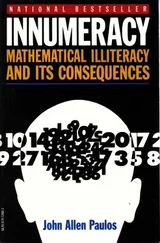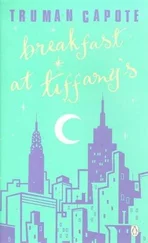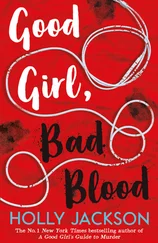The next day, Wednesday, was the proper start of the trial; it was also the first time ordinary spectators were admitted into the courtroom, an area too small to accommodate more than a modest percentage of those who applied at the door. The best seats had been reserved for twenty members of the press, and for such special personages as Hickock’s parents and Donald Cullivan (who, at the request of Perry Smith’s lawyer, had traveled from Massachusetts to appear as a character witness in behalf of his former Army friend). It had been rumored that the two surviving Clutter daughters would be present; they were not, nor did they attend any subsequent session. The family was represented by Mr. Clutter’s younger brother, Arthur, who had driven a hundred miles to be there. He told newsmen: “I just want to get a good look at them [Smith and Hickock]. I just want to see what kind of animals they are. The way I feel, I could tear them apart.” He took a seat directly behind the defendants, and fixed them with a gaze of unique persistence, as though he planned to paint their portraits from memory. Presently, and it was as if Arthur Clutter had willed him to do it, Perry Smith turned and looked at him—and recognized a face very like the face of the man he had killed: the same mild eyes, narrow lips, firm chin. Perry, who was chewing gum, stopped chewing; he lowered his eyes, a minute elapsed, then slowly his jaws began to move again. Except for this moment, Smith, and Hickock too, affected a courtroom attitude that was simultaneously uninterested and disinterested; they chewed gum and tapped their feet with languid impatience as the state summoned its first witness.
Nancy Ewalt. And after Nancy, Susan Kidwell. The young girls described what they saw upon entering the Clutter house on Sunday, November 15: the quiet rooms, an empty purse on a kitchen floor, sunshine in a bedroom, and their schoolmate, Nancy Clutter, surrounded by her own blood. The defense waived cross-examination, a policy they pursued with the next three witnesses (Nancy Ewalt’s father, Clarence, and Sheriff Earl Robinson, and the county coroner, Dr. Robert Fenton), each of whom added to the narrative of events that sunny November morning: the discovery, finally, of all four victims, and accounts of how they looked, and, from Dr. Fenton, a clinical diagnosis of why—“Severe traumas to brain and vital cranial structures inflicted by a shotgun.”
Then Richard G. Rohleder took the stand.
Rohleder is Chief Investigator of the Garden City Police Department. His hobby is photography, and he is good at it. It was Rohleder who took the pictures that, when developed, revealed Hickock’s dusty footprints in the Clutter cellar, prints the camera could discern, though not the human eye. And it was he who had photographed the corpses, those death-scene images Alvin Dewey had continuously pondered while the murders were still unsolved. The point of Rohleder’s testimony was to establish the fact of his having made these pictures, which the prosecution proposed to put into evidence. But Hickock’s attorney objected: “The sole reason the pictures are being introduced is to prejudice and inflame the minds of the jurors.” Judge Tate overruled the objection and allowed the photographs into evidence, which meant they must be shown to the jury.
While this was being done, Hickock’s father, addressing a journalist seated near him, said, “The judge up there! I never seen a man so prejudiced. Just no sense having a trial. Not with him in charge. Why, that man was a pallbearer at the funeral!” (Actually, Tate was but slightly acquainted with the victims, and was not present at their funeral in any capacity.) But Mr. Hickock’s was the only voice raised in an exceedingly silent courtroom. Altogether, there were seventeen prints, and as they were passed from hand to hand, the jurors’ expressions reflected the impact the pictures made: one man’s cheeks reddened, as if he had been slapped, and a few, after the first distressing glance, obviously had no heart for the task; it was as though the photographs had pried open their mind’s eye, and forced them to at last really see the true and pitiful thing that had happened to a neighbor and his wife and children. It amazed them, it made them angry, and several of them—the pharmacist, the manager of the bowling alley—stared at the defendants with total contempt.
The elder Mr. Hickock, wearily wagging his head, again and again murmured, “No sense. Just no sense having a trial.”
As the day’s final witness, the prosecution had promised to pro-duce a “mystery man.” It was the man who had supplied the information that led to the arrest of the accused: Floyd Wells, Hickock’s former cellmate. Because he was still serving a sentence at Kansas State Penitentiary, and therefore was in danger of retaliation from other inmates, Wells had never been publicly identified as the informer. Now, in order that he might safely testify at the trial, he had been removed from the prison and lodged in a small jail in an adjacent county. Nevertheless, Wells’ passage across the courtroom toward the witness stand was oddly stealthy—as though he expected to encounter an assassin along the way—and, as he walked past Hickock, Hickock’s lips writhed as he whispered a few atrocious words. Wells pretended not to notice; but like a horse that has heard the hum of a rattlesnake, he shied away from the betrayed man’s venomous vicinity. Taking the stand, he stared straight ahead, a somewhat chinless little farm boyish fellow wearing a very decent dark-blue suit which the State of Kansas had bought for the occasion—the state being concerned that its most important witness should look respectable, and consequently trustworthy.
Wells’ testimony, perfected by pre-trial rehearsal, was as tidy as his appearance. Encouraged by the sympathetic promptings of Logan Green, the witness acknowledged that he had once, for approximately a year, worked as a hired hand at River Valley Farm; he went on to say that some ten years later, following his conviction on a burglary charge, he had become friendly with another imprisoned burglar, Richard Hickock, and had described to him the Clutter farm and family.
“Now,” Green asked, “during your conversations with Mr. Hickock what was said about Mr. Clutter by either of you?”
“Well, we talked quite a bit about Mr. Clutter. Hickock said he was about to be paroled, and he was going to go West looking for a job; he might stop to see Mr. Clutter to get a job. I was telling him how wealthy Mr. Clutter was.”
“Did that seem to interest Mr. Hickock?”
“Well, he wanted to know if Mr. Clutter had a safe around there.”
“Mr. Wells, did you think at the time there was a safe in the Clutter house?”
“Well, it has been so long since I worked out there. I thought there was a safe. I knew there was a cabinet of some kind…The next thing I knew he [Hickock] was talking about robbing Mr. Clutter.”
“Did he tell you anything about how he was going to commit the robbery?”
“He told me if he done anything like that he wouldn’t leave no witnesses.”
“Did he actually say what he was going to do with the witnesses?”
“Yes. He told me he would probably tie them up and then rob them and then kill them.”
Having established premeditation of great degree, Green left the witness to the ministrations of the defense. Old Mr. Fleming. a classic country lawyer more happily at home with land deeds than ill deeds, opened the cross-examination. The intent of his queries as he soon established, was to introduce a subject the prosecution had emphatically avoided: the question of Wells’ own role in the murder plot, and his own moral liability.
“You didn’t,” Fleming said, hastening to the heart of the matter, “say anything at all to Mr. Hickock to discourage him from coming out here to rob and kill the Clutter family?”
Читать дальше
